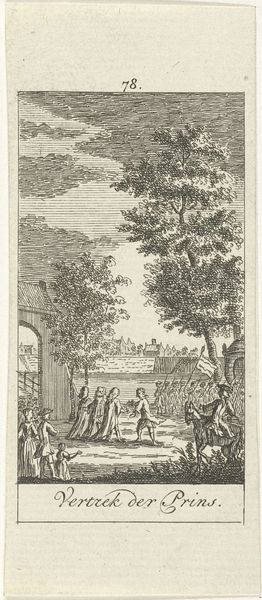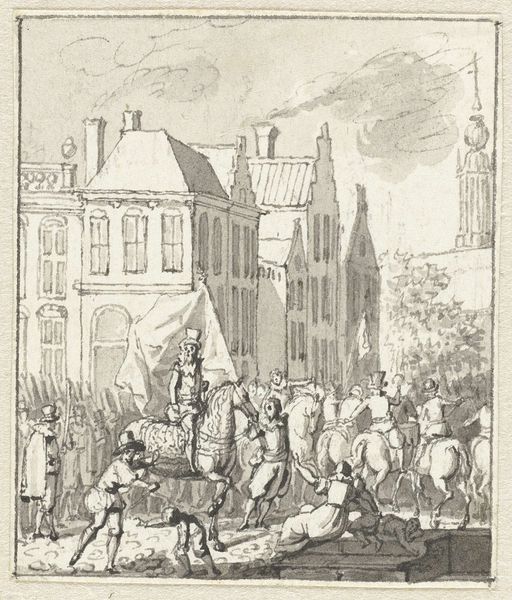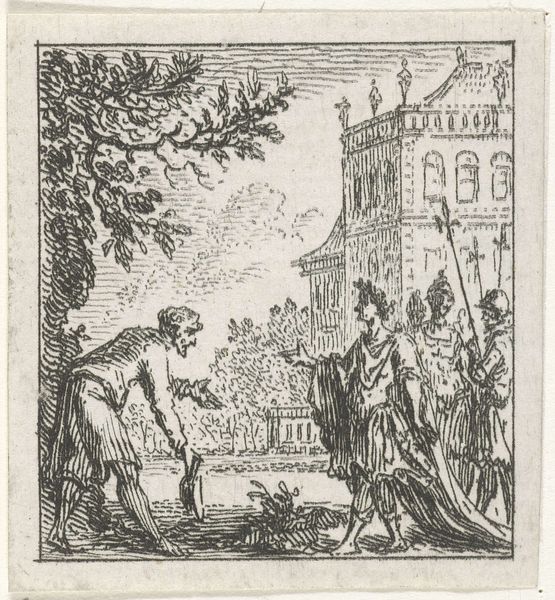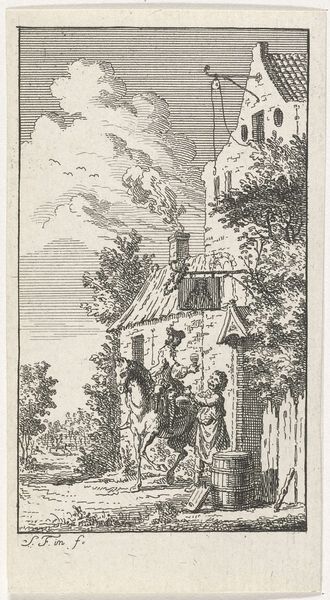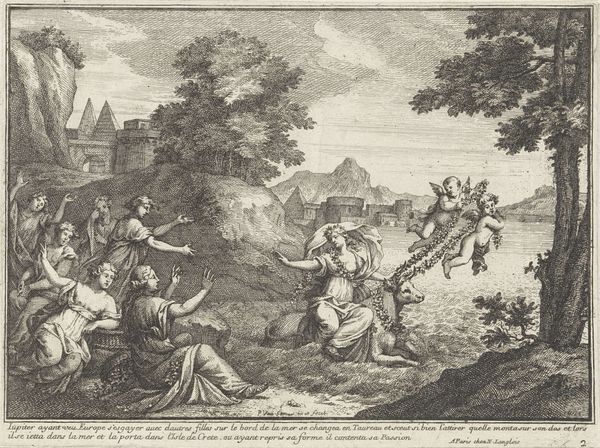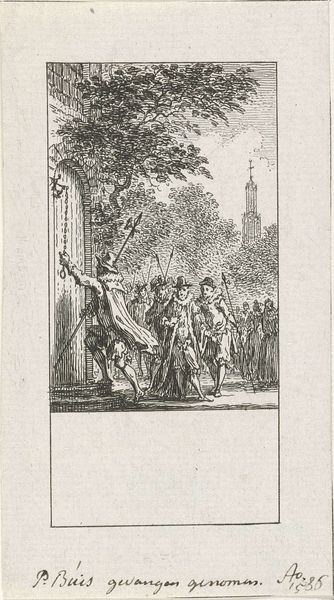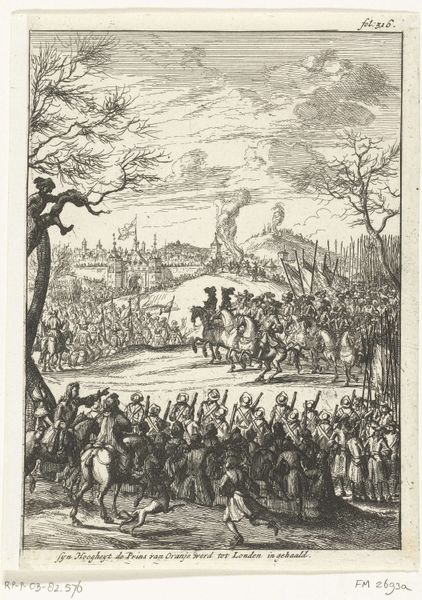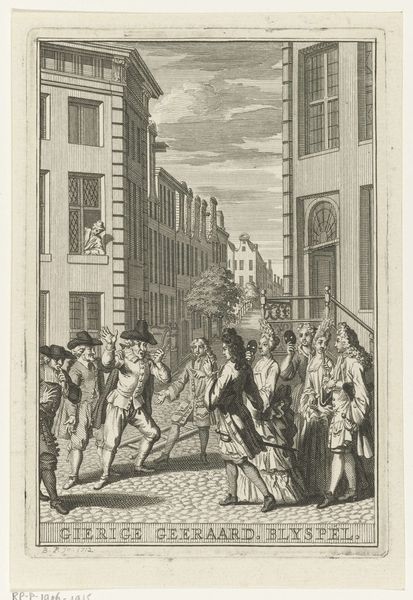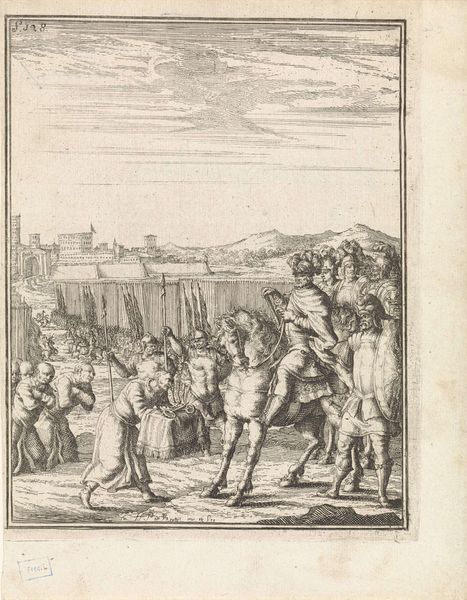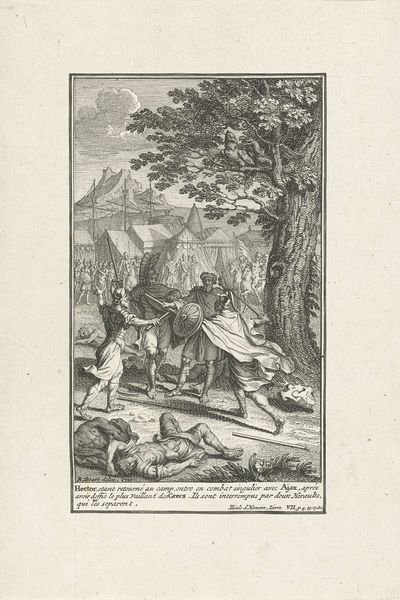
print, engraving
#
baroque
#
pen drawing
# print
#
pen sketch
#
old engraving style
#
figuration
#
line
#
history-painting
#
engraving
Dimensions: height 128 mm, width 77 mm
Copyright: Rijks Museum: Open Domain
Curator: This is "Schieten naar vaders lijk," which translates to "Shooting at Father's Corpse," an engraving attributed to Simon Fokke, created sometime between 1722 and 1784. Editor: A rather bleak first impression. I'm struck by the stark contrast created through the dense linework. The foreground figure tied to the tree appears almost sculptural against the flatly rendered architecture in the background. It's brutal in its simplicity. Curator: Indeed. The composition guides the eye to the figure tied to the tree, clearly the focal point of the narrative. The execution, employing engraving techniques, showcases incredible precision and control, especially considering the small scale of the work. Look closely at the varied line weights Fokke utilizes. Editor: It also speaks to a culture valuing skill and labor; etching demands focused hours to yield such detail, yet the end product, a print, has reproducibility. What does it say that such an intense investment results in a form easily multiplied and dispersed? Was it a commentary on authority and spectacle for wider audiences, considering what's unfolding? Curator: One could interpret the choice of engraving itself as a means of dissemination, thus widening the audience for the potent imagery. The narrative is directly expressed through the stark depiction, yet is heavily symbolic of a culture and political position, thus encouraging debate on social structures and control. Editor: Let's think about the cost involved too; the plates themselves are reusable, a valuable asset. Who financed this work, and who would buy the end prints? What statements would the buyers like to echo within their social environment? Also, the act of printing allows many social classes access, while limiting who actually views the initial plates with more intrinsic monetary worth. It becomes quite classist. Curator: Precisely, and focusing on formal aspects, the directional lines, perspective, and distribution of figures all converge to intensify the psychological impact of the central scene. The tension between depth and flatness is cleverly constructed to draw our attention precisely to where Fokke desires. Editor: Considering the labor invested in this image meant for wide dispersal and cultural interrogation, it leaves me wondering what statements about craft and society the piece continues to offer centuries after its making. Curator: I agree; a compelling piece, showcasing artistry, social dynamics, and enduring visual impact. Thank you.
Comments
No comments
Be the first to comment and join the conversation on the ultimate creative platform.
